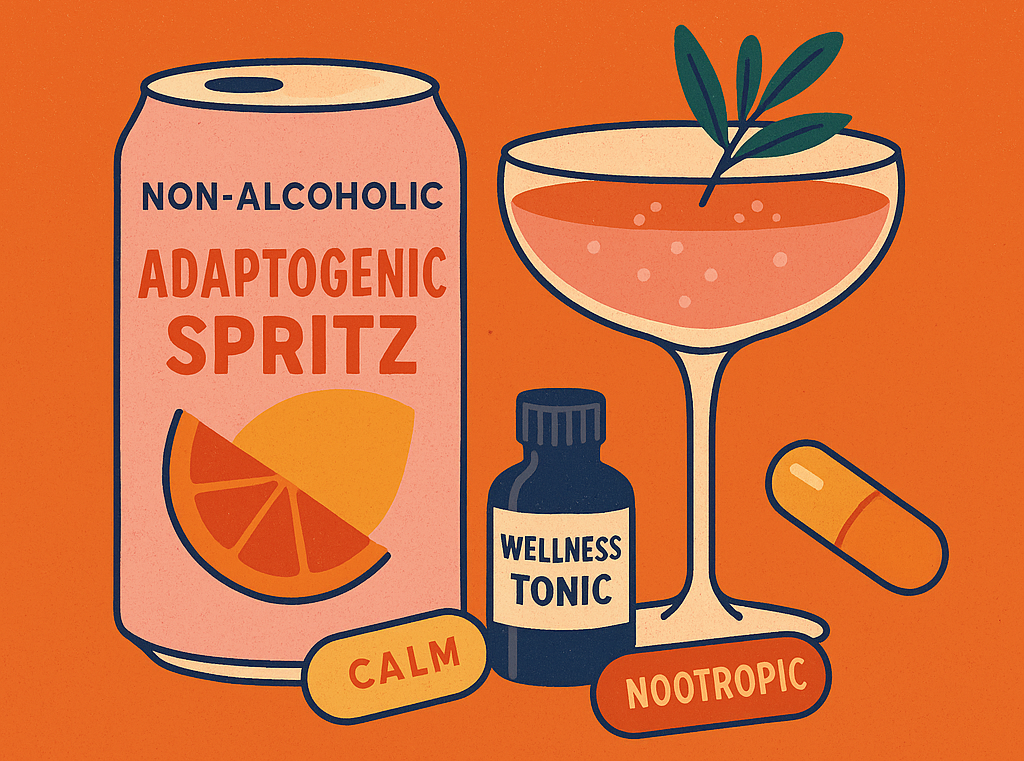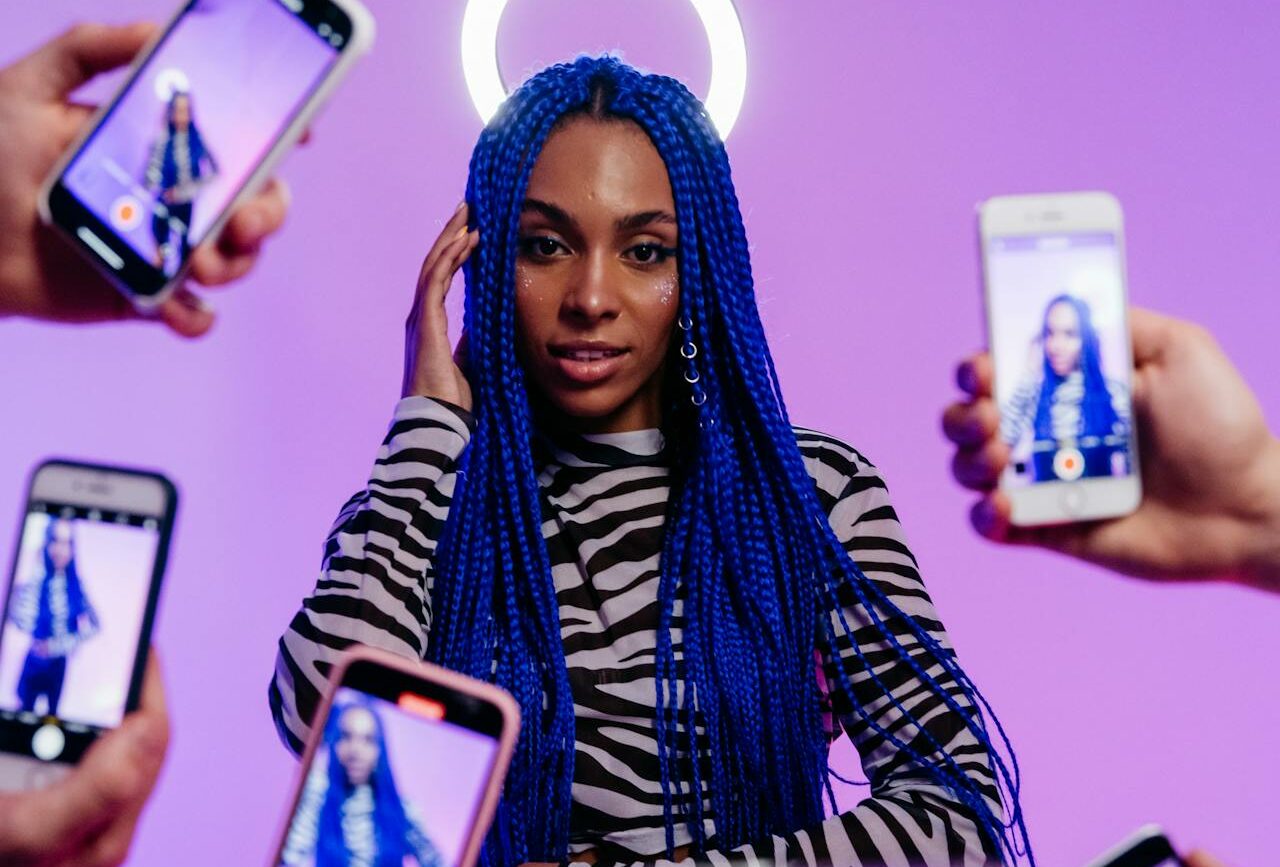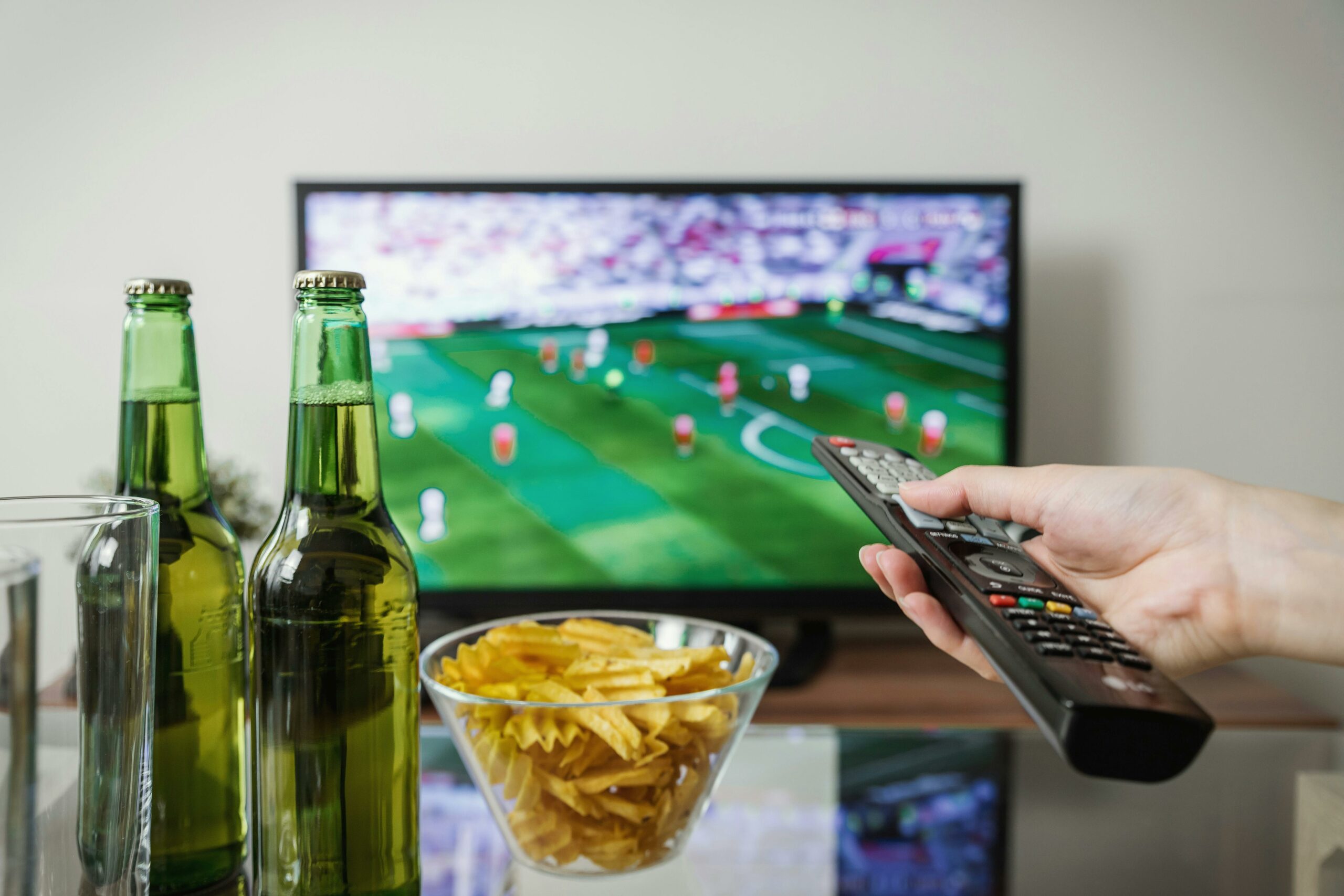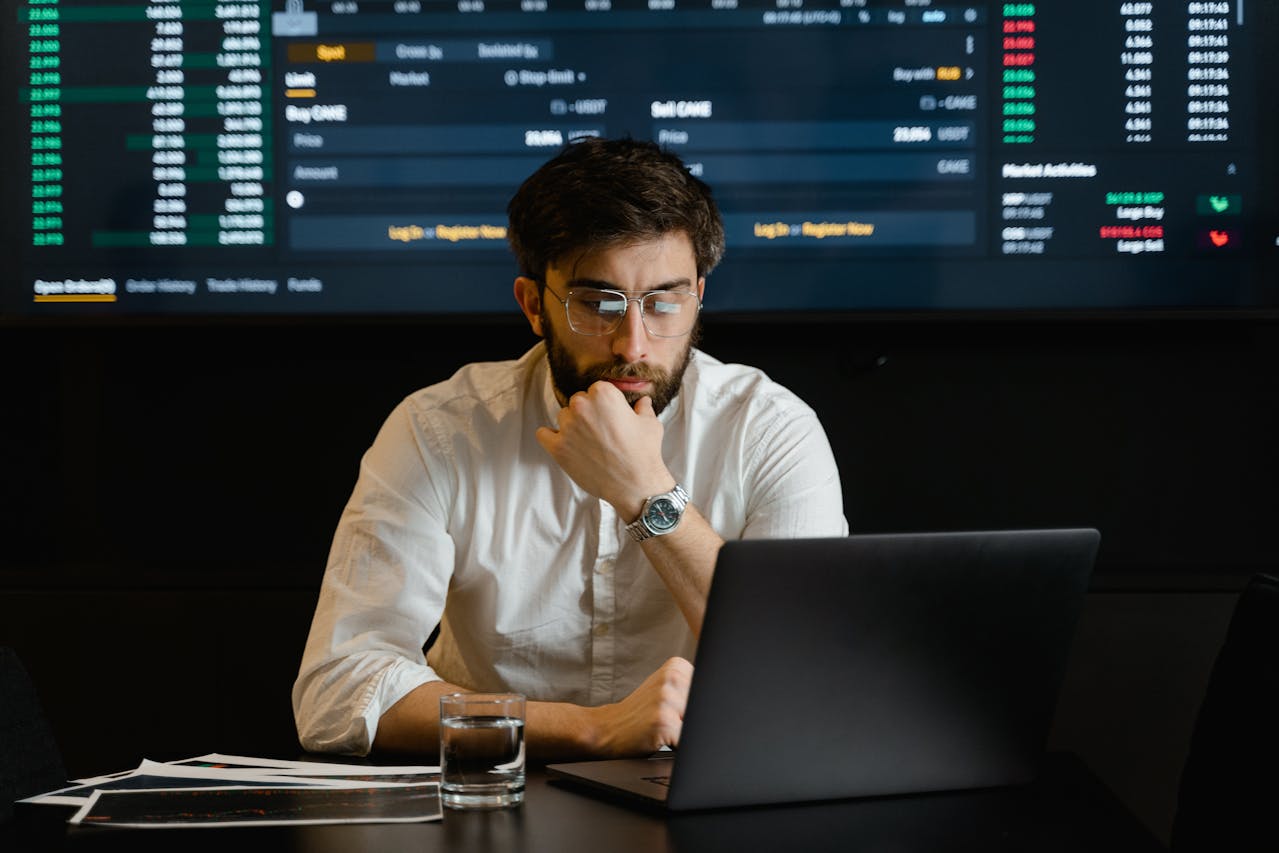Brands are shifting back to celebrity influencers—so what happens to micro-influencers? Discover how data-driven strategies balance reach, authenticity, and sustainability in influencer marketing.

Sober, But Make It Sexy: How “Wellness” Hijacked Your Happy Hour
Remember when choosing not to drink meant ordering a sad soda and pretending it was “refreshing”? When skipping the IPA made you a party pooper? Fast forward to 2025, and suddenly, abstinence is aspirational. Declining a drink isn’t just socially acceptable. It’s a lifestyle flex. And wouldn’t you know it, the alcohol industry (and its shiny sober cousins) have capitalized on that shift with all the gusto of a White Claw launch party.
We’ve covered how alcohol marketing has evolved over the decades, from prohibition-era pearl-clutching to the martini-drenched Mad Men fantasy of the 50s and 60s. If you missed that intoxicating history lesson, check out Alcohol Marketing: Before and After Prohibition for a refresh. But the newest chapter in booze branding isn’t about booze at all. It’s about what you’re not drinking, and how good you look doing it.
Welcome to the age of NoLo, where low- and non-alcoholic beverages are being marketed as premium wellness products for people who want to be the chillest, cleanest, clearest-headed version of themselves.
The New Sobriety: Less About AA, More About Aesthetics
We’re not talking about traditional sobriety, the gritty kind that lives in church basements and quietly saves lives. This is “sober-curious” territory. A blurry, boutique zone where people dabble in moderation, flirt with Dry January, and post moody photos of frothy adaptogenic mocktails garnished with edible flowers.
The goal isn’t just to stop drinking. It’s to project a kind of disciplined chic. An I-don’t-need-alcohol-to-have-fun-but-if-I-do-it’s-organic-vodka energy. Brands have jumped in with botanical blends, CBD-infused spritzes, and beverages that promise calm, clarity, and charisma, with zero proof and a fourteen dollar price tag.
These drinks aren’t just alcohol alternatives. They’re behavior-modification tools dressed up in wellness drag.
From IPA to IQ Points: When Buzzwords Replace Booze
Remember how “gluten-free” quietly slid from medical necessity to social status marker? That’s what’s happening here. You’re no longer just skipping a gin and tonic. You’re choosing cognitive function, lower cortisol, and restorative sleep. You’re “optimizing.” You’re “biohacking.” You’re totally fun at parties.
Functional beverage brands like Kin Euphorics and Recess are leading the charge, offering alcohol-free drinks spiked with mood-enhancing ingredients like ashwagandha, ginseng, L-theanine, and magnesium. They’re designed not to inebriate, but to elevate. Whatever that means.
Their websites are filled with pastel gradients, minimalist fonts, and affirmations about balance and joy. You don’t just buy a drink. You buy into a mindset. A carefully curated version of health that trades booze-fueled escapism for clarity-chasing control.
And it’s working.
According to NielsenIQ, the NoLo market grew over 30 percent in the past year alone. Gen Z and Millennials are driving the movement, citing mental health, better sleep, and self-control as top motivators. So naturally, marketers saw a trend ripe for cultivation and moved in faster than you can say “kombucha kegger.”
Same Shame, New Sugar Coating
Of course, the wellness industry has never met a self-doubt it couldn’t monetize. And while the messages behind NoLo marketing sound empowering (“Feel great without the hangover!”), they’re often fueled by the same tactics that brought us fat-free SnackWells and thigh-gap detox teas.
The message is subtle but clear. If you really loved yourself, you’d stop numbing with booze and start sipping this mood-enhancing, neuro-balancing, plant-powered tincture instead. Drinking less is rebranded as a moral upgrade. One that just happens to come in beautiful packaging and cost three times as much as a PBR.
That shift is familiar if you’ve read our earlier pieces on Dry January or the performative misery of Sober October. But this latest evolution takes things even further, blending guilt, health hype, and spiritual superiority into one shiny, sober-friendly brand experience.
It’s less about personal growth and more about consumer reprogramming.
Your Vice, Now With Vitamin B12
Just like the wellnessification of food, where indulgence got rebranded with words like “superfood” and “paleo-approved,” the alcohol space is now crawling with buzzwords that sound scientific but mostly mean “please buy this and feel virtuous.”
These drinks are supposedly better for your gut, your brain, your immune system, your skin. There are prebiotic tonics, neurotropic fizzes, and adaptogenic aperitifs, all promising to simulate the buzz without the booze. Even the can designs whisper, “You’re not like other drinkers. You’re evolved.”
It’s not that these beverages are bad. Some are delicious. A few even live up to their wellness claims. But the marketing around them is textbook FADS. Create a new insecurity, offer a stylish solution, and rake in the profits while pretending it’s all about self-care.
The Generational Cocktail: Why Everyone’s Drinking Less (and Buying More)
Marketers would love for you to believe this whole NoLo movement is a spontaneous wellness uprising. A collective awakening led by enlightened consumers ready to trade booze for breathwork. Cute theory. But if you really want to understand how we got here, follow the age curve. Not the adaptogens.
Gen Z: Sober, Snarky, and Sick of Your Hangover
This is the first generation to hit legal drinking age in the full glow of social media, mental health TikToks, and highly-Instagrammable burnout. They watched older Millennials drink their way through economic collapse and gender reveal parties and thought, “There’s gotta be a better way.”
For Gen Z, alcohol doesn’t symbolize rebellion. It signals loss of control. They’re not into blurred nights or bottomless brunch. They want drinks that match their aesthetic and moodboard, not ones that torch their sleep cycles. Cue the zero-proof spritz, cold-plunged in clarity, and conveniently available at Erewhon.
Millennials: From Bar Crawl to Cortisol Calm
Millennials were once the tequila shot generation. But these days? They’re more into sleep hygiene and stress hacks than party buses. As the oldest Millennials barrel toward 45 with fitness trackers and toddlers in tow, they’re reevaluating the whole “wine equals self-care” narrative they helped create.
Enter the NoLo market. A curated way to cut back without having to say the dreaded word “quit.” You can still socialize, still hold something fizzy in a stemless glass, but now it’s infused with magnesium and comes with a free sense of superiority.
Gen X: Still Here, Still Drinking (But Quietly More Selective)
Ah, Gen X. The latchkey kids turned low-key adults who somehow manage to fly under the radar of every trend report. They’re not driving the NoLo boom with TikToks or kombucha memes, but they are quietly participating. Many Gen Xers are hitting the age where hangovers feel like cardiac events, and weekday drinking just doesn’t vibe with early-morning Zooms and aging knees.
They’re not likely to evangelize about sobriety or drop twelve bucks on a rhodiola spritz. But hand them a solid alcohol-free IPA or a mood-tonic that doesn’t taste like melted chapstick, and they’re in. They don’t need it to be a movement. They just want something that won’t wreck their liver or their weekend.
Boomers: Drinking Less, Spending More
Boomers aren’t necessarily hopping on the sober-curious trend for TikTok cred. They’re dealing with a more old-school motivator: doctor’s orders. For many, alcohol conflicts with medications or health concerns, which means moderation isn’t optional. It’s survival.
But thanks to the wellness rebrand of NoLo drinks, Boomers aren’t just avoiding wine for heart health. Now they can sip a turmeric-spiked alcohol-free apéritif and feel trendy instead of restricted. Marketers are serving up aging gracefully, garnished with ginseng.
And Just Like That… A New Market Was Born
So yes, people across generations are drinking less. But they’re doing it for wildly different reasons. What unites them is the way marketers have framed that choice. Not as a loss, but as a glow-up. Not as restriction, but refinement. It’s not “I can’t drink,” it’s “I only drink Lion’s Mane Hibiscus Tonic now. It’s functional.”
The NoLo movement isn’t powered by collective willpower or social progress. It’s powered by the beautiful, predictable life cycle of consumers aging into new insecurities. And brands racing to meet them there with mood-altering mocktails.
Want to dive deeper into the myths and manipulation behind alcohol marketing?
Don’t miss Need a Drink? or our cultural breakdown of Craft Beer’s identity crisis.
Because whether you’re drunk on hops or high on hibiscus adaptogens, the endgame is the same. Brands tweaking your thirst until it aligns with their bottom line.
They’ve got their hooks in you.
FADS rise quickly, burn hot and fall out. They say you’re fat, you’re no fun, you need to relax, and you might even die alone.
In fact, FADS bank on the fact that you already believe all of that.
Ready to learn how it works?


